Danish literature
Introduction
the body of writings produced in the Danish and Latin languages.
During Denmark's long union with Norway (1380–1814), the Danish language became the official language and the most widely used literary medium in the combined kingdoms. This article discusses literature created in Latin and in Danish by writers of both Danish and Norwegian birth. Works written in Norwegian from the 16th century onward are discussed under Norwegian literature. Works produced by Faroese writers in Danish and in Faroese are discussed under Faroese literature.
The Middle Ages
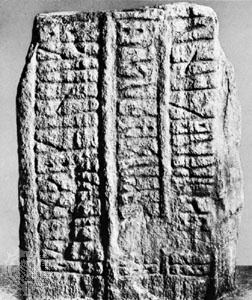 Denmark's first literature appeared in inscriptions, using the runic alphabet, that were scratched on stone or carved in metal, mainly epitaphs of warriors, kings, and priests that occasionally had short unrhymed alliterative verses in the Viking spirit. Runic inscriptions were used in Denmark from about 250, but most of those preserved date from 800 to 1100. With the introduction of Christianity, Latin became the predominant literary language; Denmark's first important contribution to world literature—the Gesta Danorum (written between 1185 and 1222; “The Deeds of the Danes”; Eng. trans. The History of the Danes) of Saxo Grammaticus—was written in Latin. The medieval ballads of Denmark are among the most important in Europe; 539 are known in more than 3,000 versions, but nearly all were written down after the end of the Middle Ages, with the first printed edition appearing in 1591.
Denmark's first literature appeared in inscriptions, using the runic alphabet, that were scratched on stone or carved in metal, mainly epitaphs of warriors, kings, and priests that occasionally had short unrhymed alliterative verses in the Viking spirit. Runic inscriptions were used in Denmark from about 250, but most of those preserved date from 800 to 1100. With the introduction of Christianity, Latin became the predominant literary language; Denmark's first important contribution to world literature—the Gesta Danorum (written between 1185 and 1222; “The Deeds of the Danes”; Eng. trans. The History of the Danes) of Saxo Grammaticus—was written in Latin. The medieval ballads of Denmark are among the most important in Europe; 539 are known in more than 3,000 versions, but nearly all were written down after the end of the Middle Ages, with the first printed edition appearing in 1591.The 16th century
In 1536 the Lutheran Reformation was carried through in Denmark, and the beginning of the 16th century was characterized by many pamphlets for or against the Roman Catholic Church. European humanism and the Renaissance made their influence felt also in Denmark, where Christiern Pedersen (Pedersen, Christiern) was the most prominent humanist who supported the Reformation. He edited the Gesta Danorum by the 13th-century historian Saxo Grammaticus, translated the New Testament, adapted Martin Luther's pamphlets into Danish, and participated in a translation of the entire Bible (1550). Poul Helgesen was the most gifted opponent of the Lutheran Reformation and Hans Tausen (Tausen, Hans) its most talented spokesman. The Visitation Book by the Lutheran bishop Peder Palladius is an important literary document. The two most important historians were Anders Sørensen Vedel (Vedel, Anders Sørensen), who translated the Gesta Danorum into Danish in 1575 and was also the publisher and editor of the first collection of Danish medieval ballads (1591), and Arild Huitfeldt.
Sixteenth-century Danish poetry was religious or polemical, with fine love poetry and hymns. The earliest plays date from the beginning of the century. The most important playwright of the period was Hieronymus Justesen Ranch, whose farce Karrig nidding (“The Miserly Rascal”) was his best play.
The literary Renaissance
The literary Renaissance reached Denmark in the 1600s, giving rise to a strict adherence to Classical patterns and deference to authority in political, religious, and literary matters. In religious literature Latin dogmatics and pamphlets reflecting the superstitions of the century were dominant. It was, however, a great era of scholarship. Ole Worm is famous for his book on runic inscriptions, Monumenta Danica (1643). Thormod Torfaeus and Árni Magnússon (Magnússon, Árni) introduced the study of Old Norse literature; Peder Hansen Resen edited and translated some of the poetry of the Old Norse Edda; and Erik Pontoppidan and Peder Syv introduced the linguistic study of Danish.
 Danish poetry in the 17th century tended to follow the classics slavishly, and the favourite forms were the hexameter, the alexandrine, and the sonnet. Simplicity is deliberately avoided; preciosity is the predominant style; allegories, euphemisms, and metaphors abound. Anders Arrebo translated the Psalms and wrote Hexaëmeron (1661), a Danish version of the 16th-century French poet Guillaume du Bartas's La Semaine. The century was rich in occasional poetry; didactic and pastoral poems were also common. Anders Bording, an exponent of Danish Baroque poetry, was also the founder of the first Danish newspaper, Den danske Mercurius (from 1666), in which the news appeared in rhymed alexandrines. The only truly great poet of the period was Thomas Kingo (Kingo, Thomas), a supreme master in almost every kind of poetry. His hymns reflect a violent, passionate character, worldly and yet deeply religious.
Danish poetry in the 17th century tended to follow the classics slavishly, and the favourite forms were the hexameter, the alexandrine, and the sonnet. Simplicity is deliberately avoided; preciosity is the predominant style; allegories, euphemisms, and metaphors abound. Anders Arrebo translated the Psalms and wrote Hexaëmeron (1661), a Danish version of the 16th-century French poet Guillaume du Bartas's La Semaine. The century was rich in occasional poetry; didactic and pastoral poems were also common. Anders Bording, an exponent of Danish Baroque poetry, was also the founder of the first Danish newspaper, Den danske Mercurius (from 1666), in which the news appeared in rhymed alexandrines. The only truly great poet of the period was Thomas Kingo (Kingo, Thomas), a supreme master in almost every kind of poetry. His hymns reflect a violent, passionate character, worldly and yet deeply religious.Of special interest among Danish works of the 17th century are the memoirs of Leonora Christina, daughter of King Christian IV, a fascinating document about her 20 years' imprisonment in the Blue Tower of Copenhagen.
The 18th century
 The 18th century was a fertile period in Danish literature. The great name in the first half of the century was that of Ludvig Holberg (Holberg, Ludvig, Friherre Holberg), a Norwegian by birth. His most important contributions, written for the first Danish-language theatre in Copenhagen, which opened in 1722, were 32 comedies of character and manners, including some moral allegories. His aim was to create a modern Danish literature on European lines and to serve the cause of reason by making people laugh at their own follies. Influenced by English and French thinking, he was a rationalist and a moderate, a university professor, and an author of many historical works. He also wrote satire, a mock-heroic poem, and, in Latin, Nicolai Klimii Iter Subterraneum (1741; Journey of Niels Klim to the World Underground), an early science-fiction novel. His Moralske tanker (1744; “Moral Thoughts”; Eng. trans. Moral Reflections & Epistles) and Epistler (1748–54; “Letters”) are the finest examples of the Danish political essay form.
The 18th century was a fertile period in Danish literature. The great name in the first half of the century was that of Ludvig Holberg (Holberg, Ludvig, Friherre Holberg), a Norwegian by birth. His most important contributions, written for the first Danish-language theatre in Copenhagen, which opened in 1722, were 32 comedies of character and manners, including some moral allegories. His aim was to create a modern Danish literature on European lines and to serve the cause of reason by making people laugh at their own follies. Influenced by English and French thinking, he was a rationalist and a moderate, a university professor, and an author of many historical works. He also wrote satire, a mock-heroic poem, and, in Latin, Nicolai Klimii Iter Subterraneum (1741; Journey of Niels Klim to the World Underground), an early science-fiction novel. His Moralske tanker (1744; “Moral Thoughts”; Eng. trans. Moral Reflections & Epistles) and Epistler (1748–54; “Letters”) are the finest examples of the Danish political essay form.Among Holberg's contemporaries the finest lyrical poets are Hans Adolf Brorson (Brorson, Hans Adolf), a mystic whose pietist hymns often have a background of personal sorrow or agony, and Ambrosius Stub, whose poems are mainly religious and moralizing verses, witty epigrams, or drinking songs. A satirist, Christian Falster, was a conservative counterpart to Holberg; Friedrich Eilschov and Jens Schelderup Sneedorff, the latter of whom edited the periodical Den Patriotiske Tilskuer (“The Patriotic Spectator”), were both rationalist disciples of Holberg.
A significant revival of Danish literature took place toward the end of the century. In 1772 the Norwegian Johan Herman Wessel (Wessel, Johan Herman), one of the greatest humorists to use the Danish language, wrote Kaerlighed uden strømper (“Love Without Stockings”), a parody of the Danish imitations of Italian operas and French tragedies that had superseded Holberg's comedies.
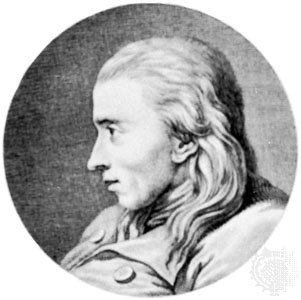 At the same time, a revival of emotional poetry was taking place, influenced by German and English literature. Johannes Ewald (Ewald, Johannes), perhaps Denmark's greatest lyric poet, was the first to discover the poetic wealth of Scandinavian antiquity in the Gesta Danorum of Saxo Grammaticus and in the myths, sagas, and ballads. He wrote verse dramas and deeply personal and descriptive poems. Fiskerne (1779; “The Fishermen”) was the first serious Danish drama in which ordinary people were treated heroically. His memoirs, Levnet og meninger (posthumously published in 1804; “Life and Opinions”), were influenced by Rousseau and English novelist Laurence Sterne. Jens Baggesen (Baggesen, Jens) at first imitated the satires of Holberg and Wessel but gradually developed as a poet of distinction. In Labyrinten (1792–93; “The Labyrinth”), he described his travels in Europe in the manner of Sterne.
At the same time, a revival of emotional poetry was taking place, influenced by German and English literature. Johannes Ewald (Ewald, Johannes), perhaps Denmark's greatest lyric poet, was the first to discover the poetic wealth of Scandinavian antiquity in the Gesta Danorum of Saxo Grammaticus and in the myths, sagas, and ballads. He wrote verse dramas and deeply personal and descriptive poems. Fiskerne (1779; “The Fishermen”) was the first serious Danish drama in which ordinary people were treated heroically. His memoirs, Levnet og meninger (posthumously published in 1804; “Life and Opinions”), were influenced by Rousseau and English novelist Laurence Sterne. Jens Baggesen (Baggesen, Jens) at first imitated the satires of Holberg and Wessel but gradually developed as a poet of distinction. In Labyrinten (1792–93; “The Labyrinth”), he described his travels in Europe in the manner of Sterne.The 19th century
The Romantic period
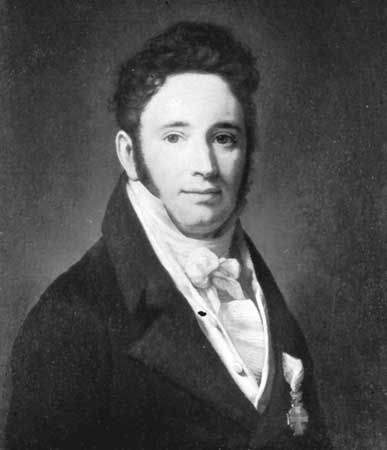 The Romantic movement (Romanticism) came to Denmark from Germany, inspired partly by the Jena Romantics (Jena Romanticism) and partly by the Neoclassicism of Goethe and Schiller. Friedrich Schelling's philosophy was interpreted in Denmark by the Norwegian-born philosopher Henrik Steffens (Steffens, Henrik), but the leading Danish Romantics gave it a form very different from the original. The leader of the Romantic movement in Denmark was Adam Gottlob Oehlenschläger (Oehlenschläger, Adam Gottlob), whose unparalleled versatility in poetry, drama, and prose showed the influence of certain works of Goethe and Schiller and of German Romanticism. Outstanding examples of his work are the plays Sanct hansaften-spil (1803; “Play for Midsummer Eve”) and Aladdin (1805); Hakon Jarl (1807), one of his many Northern tragedies; and Helge (1814), two poem cycles introducing a verse drama. The popular and historical songs and hymns of the poet N.F.S. Grundtvig (Grundtvig, N.F.S.), as well as his personal poetry, have given him a lasting place in Danish literature. Sharing the Romantic enthusiasm for antiquities of Scandinavia, he translated the 13th-century historians Saxo Grammaticus and Snorri Sturluson and was an early translator of Beowulf. Bernhard Severin Ingemann (Ingemann, Bernhard Severin) wrote historical novels and a poetic cycle, Holger Danske (1837; “Holger the Dane”), around the themes of chivalry and nationalism; he also wrote Morgen-og aftensange (1837–39; “Morning and Evening Songs”). Johannes Carsten Hauch (Hauch, Johannes Carsten) wrote tragic and philosophical dramas, novels, and contemplative poetry.
The Romantic movement (Romanticism) came to Denmark from Germany, inspired partly by the Jena Romantics (Jena Romanticism) and partly by the Neoclassicism of Goethe and Schiller. Friedrich Schelling's philosophy was interpreted in Denmark by the Norwegian-born philosopher Henrik Steffens (Steffens, Henrik), but the leading Danish Romantics gave it a form very different from the original. The leader of the Romantic movement in Denmark was Adam Gottlob Oehlenschläger (Oehlenschläger, Adam Gottlob), whose unparalleled versatility in poetry, drama, and prose showed the influence of certain works of Goethe and Schiller and of German Romanticism. Outstanding examples of his work are the plays Sanct hansaften-spil (1803; “Play for Midsummer Eve”) and Aladdin (1805); Hakon Jarl (1807), one of his many Northern tragedies; and Helge (1814), two poem cycles introducing a verse drama. The popular and historical songs and hymns of the poet N.F.S. Grundtvig (Grundtvig, N.F.S.), as well as his personal poetry, have given him a lasting place in Danish literature. Sharing the Romantic enthusiasm for antiquities of Scandinavia, he translated the 13th-century historians Saxo Grammaticus and Snorri Sturluson and was an early translator of Beowulf. Bernhard Severin Ingemann (Ingemann, Bernhard Severin) wrote historical novels and a poetic cycle, Holger Danske (1837; “Holger the Dane”), around the themes of chivalry and nationalism; he also wrote Morgen-og aftensange (1837–39; “Morning and Evening Songs”). Johannes Carsten Hauch (Hauch, Johannes Carsten) wrote tragic and philosophical dramas, novels, and contemplative poetry.Poetic Realism
 New elements of reason and realism appeared after the first quarter of the century in the works of Poul Møller (Møller, Poul Martin), who wrote the first Danish novel on contemporary life, En dansk students eventyr (1824; “The Adventures of a Danish Student”), as well as dramatic poems and fables that sometimes show personal disillusionment. Reason and realism are also apparent in the works of Steen Steensen Blicher (Blicher, Steen Steensen), who in the poetry collection Traekfuglene (1838; “The Birds of Passage”) interpreted human nature with sad resignation. Some of his best poems are in the Jutland dialect. Beginning in 1824 with the masterly En landsbydegns dagbog (“The Diary of a Parish Clerk”), his many noveller, or short stories, struck notes varying from sorrow and resignation to humour and irony.
New elements of reason and realism appeared after the first quarter of the century in the works of Poul Møller (Møller, Poul Martin), who wrote the first Danish novel on contemporary life, En dansk students eventyr (1824; “The Adventures of a Danish Student”), as well as dramatic poems and fables that sometimes show personal disillusionment. Reason and realism are also apparent in the works of Steen Steensen Blicher (Blicher, Steen Steensen), who in the poetry collection Traekfuglene (1838; “The Birds of Passage”) interpreted human nature with sad resignation. Some of his best poems are in the Jutland dialect. Beginning in 1824 with the masterly En landsbydegns dagbog (“The Diary of a Parish Clerk”), his many noveller, or short stories, struck notes varying from sorrow and resignation to humour and irony.Minor writers of the same period were Thomasine Gyllembourg-Ehrensvärd, whose novel En hverdagshistorie (1828; “A Story of Everyday Life”) was much admired; Andreas de Saint-Aubin, who wrote novels under the nom de plume of Carl Bernhard; and Carl Bagger, whose novel Min broders levned (1835; “My Brother's Life”) shocked the literary world with its bold realism.
Romantisme
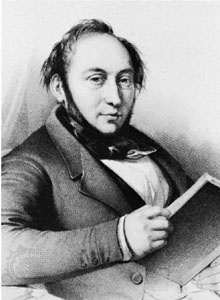 The 1830s and '40s saw the emergence of romantisme, a movement that reflected a fading faith in the philosophic ideals of Romanticism. The literature of romantisme became more contemplative and more concerned with form than with content. Johan Ludvig Heiberg (Heiberg, Johan Ludvig), who led this movement, attempted to revivify Danish drama by importing French vaudeville, and in his serious late-Romantic plays Elverhøj (1828; “The Elfinhill”) and Syvsoverdag (1840; “Day of the Seven Sleepers”), he juxtaposed poetic and pedestrian reality. His finest achievement was an apocalyptic verse comedy, En sjael efter døden (1841; “A Soul After Death”). He was the leading literary critic of his time, profoundly influenced by the philosophy of Hegel. Henrik Hertz (Hertz, Henrik) also regarded the perfection of poetic form as more important than its content, as was clearly expressed in Gjenganger-breve (1830; “Letters of a Ghost”). He also wrote comedies and experimented with serious Romantic plays, as in Kong Renés datter (1845; King René's Daughter).
The 1830s and '40s saw the emergence of romantisme, a movement that reflected a fading faith in the philosophic ideals of Romanticism. The literature of romantisme became more contemplative and more concerned with form than with content. Johan Ludvig Heiberg (Heiberg, Johan Ludvig), who led this movement, attempted to revivify Danish drama by importing French vaudeville, and in his serious late-Romantic plays Elverhøj (1828; “The Elfinhill”) and Syvsoverdag (1840; “Day of the Seven Sleepers”), he juxtaposed poetic and pedestrian reality. His finest achievement was an apocalyptic verse comedy, En sjael efter døden (1841; “A Soul After Death”). He was the leading literary critic of his time, profoundly influenced by the philosophy of Hegel. Henrik Hertz (Hertz, Henrik) also regarded the perfection of poetic form as more important than its content, as was clearly expressed in Gjenganger-breve (1830; “Letters of a Ghost”). He also wrote comedies and experimented with serious Romantic plays, as in Kong Renés datter (1845; King René's Daughter).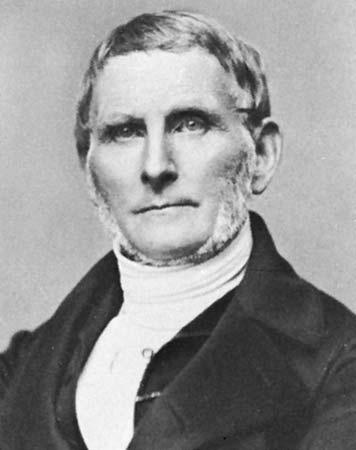 An upsurge of interest in lyric poetry occurred in the 1830s and 1840s, led by poets concerned with the aesthetic treatment of love and nature. Christian Winther, best known for the long verse novel Hjortens flugt (1855; “The Flight of the Stag”), sang the praises of his native island, Zealand, and of woman. Ludvig Bødtcher wrote delicate and sensitive poetry, some of which was inspired by his time in Italy. Emil Aarestrup was a highly discriminating artist who probed the existential depths of erotic themes. Frederik Paludan-Müller (Paludan-Müller, Frederik) became an uncompromising moralist; Adam Homo (1841–48; Eng. trans. Adam Homo), a poetic epic, was a bitter contemporary satire.
An upsurge of interest in lyric poetry occurred in the 1830s and 1840s, led by poets concerned with the aesthetic treatment of love and nature. Christian Winther, best known for the long verse novel Hjortens flugt (1855; “The Flight of the Stag”), sang the praises of his native island, Zealand, and of woman. Ludvig Bødtcher wrote delicate and sensitive poetry, some of which was inspired by his time in Italy. Emil Aarestrup was a highly discriminating artist who probed the existential depths of erotic themes. Frederik Paludan-Müller (Paludan-Müller, Frederik) became an uncompromising moralist; Adam Homo (1841–48; Eng. trans. Adam Homo), a poetic epic, was a bitter contemporary satire.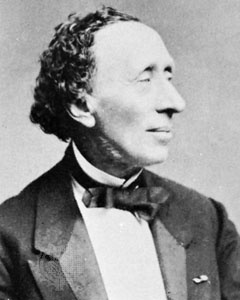 Hans Christian Andersen (Andersen, Hans Christian) is most important for his many fairy tales, such as The Ugly Duckling and Thumbelina, the majority of whose plots were his own invention. He also wrote novels, plays, travel books, and poems.
Hans Christian Andersen (Andersen, Hans Christian) is most important for his many fairy tales, such as The Ugly Duckling and Thumbelina, the majority of whose plots were his own invention. He also wrote novels, plays, travel books, and poems. Søren Kierkegaard (Kierkegaard, Søren) holds a position entirely unique in Danish literature. His highly personal religious philosophy is expressed in such works as Enten-Eller (1843; Either/Or: A Fragment of Life), Stadier paa livets vei (1845; Stages on Life's Way), Filosofiske smuler (1844; Philosophical Fragments), and Sygdommen til doden (1849; The Sickness unto Death). He spent his last years in a violent and passionate attack on “official Christianity.”
Søren Kierkegaard (Kierkegaard, Søren) holds a position entirely unique in Danish literature. His highly personal religious philosophy is expressed in such works as Enten-Eller (1843; Either/Or: A Fragment of Life), Stadier paa livets vei (1845; Stages on Life's Way), Filosofiske smuler (1844; Philosophical Fragments), and Sygdommen til doden (1849; The Sickness unto Death). He spent his last years in a violent and passionate attack on “official Christianity.”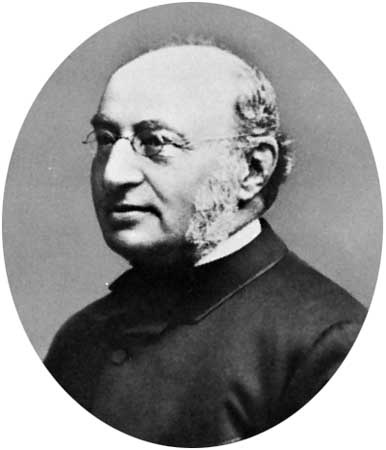 Meïr Aron Goldschmidt (Goldschmidt, Meïr Aron) edited a rebellious antiroyalist weekly, Corsaren (“The Corsair”), while many of his novels and short stories are concerned with Jewish life in the Danish community. The 1850s and 1860s produced few new Danish writers of importance; the most original was Hans Egede Schack, whose novel Phantasterne (1857; “The Daydreamers”) revealed great psychological gifts.
Meïr Aron Goldschmidt (Goldschmidt, Meïr Aron) edited a rebellious antiroyalist weekly, Corsaren (“The Corsair”), while many of his novels and short stories are concerned with Jewish life in the Danish community. The 1850s and 1860s produced few new Danish writers of importance; the most original was Hans Egede Schack, whose novel Phantasterne (1857; “The Daydreamers”) revealed great psychological gifts.The influence of Georg Brandes
 About 1870 there arose in Denmark a new movement—called det moderne gennembrud (moderne gennembrud, det) (Danish: “the modern breakthrough”)—led by the critic and scholar Georg Brandes (Brandes, Georg), from which a modern (i.e., a naturalistic or realistic) literature emerged. His Hovedstrømninger i det 19de aarhundredes litteratur (1872–90; Main Currents in 19th Century Literature) caused a great sensation. Brandes influenced Ibsen and Strindberg and wrote many scholarly and critical works illustrating radical ideas. His later biographies of Shakespeare, Goethe, Voltaire, Julius Caesar, and Michelangelo reveal the influence of German philosopher Friedrich Nietzsche, whom he introduced to Scandinavia and whose work enabled him to develop a philosophy of aristocratic radicalism. Among Brandes's followers was Jens Peter Jacobsen (Jacobsen, Jens Peter), whose novella Mogens (1872) and novel Fru Marie Grubbe (1876; Eng. trans. Marie Grubbe: A Lady of the Seventeenth Century) are the supreme examples of Danish naturalism. His novel Niels Lyhne (1880; Eng. trans. Niels Lyhne) and some of his other short stories counterpose dream with reality. Holger Drachmann (Drachmann, Holger Henrik Herholdt), the greatest lyric poet of the period, was also a follower, although he later reacted strongly against Brandes; his poetry and prose were often about the sea.
About 1870 there arose in Denmark a new movement—called det moderne gennembrud (moderne gennembrud, det) (Danish: “the modern breakthrough”)—led by the critic and scholar Georg Brandes (Brandes, Georg), from which a modern (i.e., a naturalistic or realistic) literature emerged. His Hovedstrømninger i det 19de aarhundredes litteratur (1872–90; Main Currents in 19th Century Literature) caused a great sensation. Brandes influenced Ibsen and Strindberg and wrote many scholarly and critical works illustrating radical ideas. His later biographies of Shakespeare, Goethe, Voltaire, Julius Caesar, and Michelangelo reveal the influence of German philosopher Friedrich Nietzsche, whom he introduced to Scandinavia and whose work enabled him to develop a philosophy of aristocratic radicalism. Among Brandes's followers was Jens Peter Jacobsen (Jacobsen, Jens Peter), whose novella Mogens (1872) and novel Fru Marie Grubbe (1876; Eng. trans. Marie Grubbe: A Lady of the Seventeenth Century) are the supreme examples of Danish naturalism. His novel Niels Lyhne (1880; Eng. trans. Niels Lyhne) and some of his other short stories counterpose dream with reality. Holger Drachmann (Drachmann, Holger Henrik Herholdt), the greatest lyric poet of the period, was also a follower, although he later reacted strongly against Brandes; his poetry and prose were often about the sea.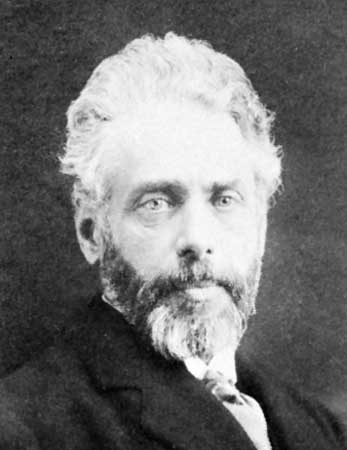 Henrik Pontoppidan (Pontoppidan, Henrik), one of Denmark's greatest novelists, dealt at first with social injustices and contemporary political, moral, and religious problems in his short stories. The Denmark of his day was also the subject of his greatest work, three long novel cycles in which he makes penetrating, if unflattering, analyses of Danish national character: Det forjaettede land (1891–95; The Promised Land), Lykke-Per (1898–1904; “Lucky Peter”), and De dødes rige (1912–16; “The Realm of the Dead”). Herman Bang (Bang, Herman), another prominent novelist, was interested primarily in the outsiders of life and in insignificant people. His skillful, mainly impressionistic technique is displayed in his best novels: Ved vejen (1886; “By the Way-Side”), Tine (1889; Eng. trans. Tine), Ludvigsbakke (1896; Eng. trans. Ida Brandt), and Det hvide hus (1898; “The White House”).
Henrik Pontoppidan (Pontoppidan, Henrik), one of Denmark's greatest novelists, dealt at first with social injustices and contemporary political, moral, and religious problems in his short stories. The Denmark of his day was also the subject of his greatest work, three long novel cycles in which he makes penetrating, if unflattering, analyses of Danish national character: Det forjaettede land (1891–95; The Promised Land), Lykke-Per (1898–1904; “Lucky Peter”), and De dødes rige (1912–16; “The Realm of the Dead”). Herman Bang (Bang, Herman), another prominent novelist, was interested primarily in the outsiders of life and in insignificant people. His skillful, mainly impressionistic technique is displayed in his best novels: Ved vejen (1886; “By the Way-Side”), Tine (1889; Eng. trans. Tine), Ludvigsbakke (1896; Eng. trans. Ida Brandt), and Det hvide hus (1898; “The White House”).Other notable writers at the end of the century were Gustav Wied (Wied, Gustav), whose “satyr plays” and whose novels Livsens ondskab (1899; “Life's Malice”) and Knagsted (1902) were full of malicious humour; Vilhelm Topsøe, a conservative realist; Peter Nansen, who wrote stories reminiscent of those of French naturalist writer Guy de Maupassant; Carl Ewald, whose nature stories were based on Darwinian philosophy; Karl Larsen, who caught the atmosphere of Copenhagen and its inhabitants with fine precision; and several playwrights, including Edvard Brandes (Brandes, Edvard), Otto Benzon, Gustav Esmann, Sven Lange, Einar Christiansen, and Henri Nathansen.
Neoromantic revival
In the 1890s a Neoromantic poetic revival occurred, reinstating the value of emotion and fantasy. The leader of these Symbolist (Symbolist movement) poets was Johannes Jørgensen (Jørgensen, Johannes), whose finest works show a simplicity of style and intensity of feeling. (He later abandoned Symbolism for Roman Catholicism and immigrated to Italy.) Other poets of the time include Viggo Stuckenberg, who expressed sad resignation; Sophus Claussen (Claussen, Sophus), whose compelling poems, often obscure, show sensuality, a pantheistic love of nature, and sophisticated aestheticism; and Helge Rode, a mystic who also wrote plays and criticism attacking intellectualism.
The 20th century
Novels and poetry before World War II
Several women contributed to literature at the turn of the century: Gyrithe Lemche, who wrote a novel cycle, Edwardsgave (1900–12); Agnes Henningsen, who was often concerned with experiences of the emancipated woman; and Karin Michaëlis, a fine psychologist, best known for her novel Den farlige alder (1910; The Dangerous Age).
The two greatest early 20th-century Danish novelists were Martin Andersen Nexø (Andersen Nexø, Martin) and Johannes V. Jensen (Jensen, Johannes V.). Nexø's works describe the lives of poor people; Pelle erobreren (4 vol., 1906–10; Pelle the Conqueror; film 1987) and Ditte Menneskebarn (5 vol., 1917–21; Eng. trans. in 3 vol., Ditte: Girl Alive!, Daughter of Man, and Towards the Stars) are great epics of proletarian life, and his reminiscences are among the finest in the language. Jensen, who was also a great and original lyric poet and prolific essayist, wrote Den lange rejse (6 vol., 1908–22; The Long Journey), an ambitious mythical epic of humankind from the baboon stage to the discovery of America. He was also noted for Himmerlandshistorier (1904, revised 1910; “Tales from Himmerland”), based on his childhood memories of North Jutland; Kongens fald (1900–01; The Fall of the King); and nine volumes of Myter (1907–44; “Myths”). Other novelists of this period include Jakob Knudsen, whose works address Christian and moral problems; Harald Kidde, an introspective and melancholy writer; and Knud Hjortø, a keen writer of psychological novels and satirical short stories.
Regional literature of the early 1900s, with which Jensen was primarily associated because of his Himmerlandshistorier, was produced chiefly by Jutland writers. Prominent among them were three novelists and poets: Jeppe Aakjær (Aakjær, Jeppe), Thøger Larsen, and Johan Skjoldborg. Also, Marie Bregendahl (Bregendahl, Marie) and Harry Søiberg drew upon Jutland settings for their novels.
Significant poets of the post-World War I generation were Tom Kristensen (Kristensen, Tom), Otto Gelsted, Emil Bønnelycke, Kai Friis Møller, and Per Lange. Among novelists, Jacob Paludan wrote widely praised fiction—Fugle omkring fyret (1925; Birds Around the Light) and Jørgen Stein (1932–33)—as also did Hans Kirk, whose Fiskerne (1928; The Fishermen) represents social realism at its best. Harald Herdal, a disciple of Nexø, exposed society's hypocrisy in his proletarian novels. Jørgen Nielsen's themes were suppressed hatred, sin, and fear among Jutland peasants. Hans Christian Branner (Branner, Hans Christian), an important writer of novels, plays, and short stories, spoke of loneliness and the danger of power. Another writer of these three genres was Knud Sønderby, who had a brilliant style and deep understanding. Nis Petersen, a poet and novelist, was famous for Sandalmagernes gade (1931; The Street of the Sandalmakers) and Spildt maelk (1934; Spilt Milk).
Isak Dinesen (Dinesen, Isak) (Karen Christence Dinesen, Baroness Blixen-Finecke), an aristocratic writer of subtle irony, wrote both in Danish and in English; her first notable work, a collection of short stories featuring a strong fairy-tale-like quality, was published first in English as Seven Gothic Tales (1934) and subsequently translated by the author into Danish as Syv fantastiske Fortællinger. Dinesen's other major works include her novelistic memoir Den afrikanske farm (1937; Out of Africa) and two more collections of finely crafted stories, Vinter-Eventyr (1942; Winter's Tales) and Sidste fortællinger (1957; Last Tales). Other distinguished novelists of the time were Hans Scherfig, a great humorist and social satirist, and Martin Alfred Hansen (Hansen, Martin Alfred), a psychological novelist whose best-known novel is Løgneren (1950; The Liar).
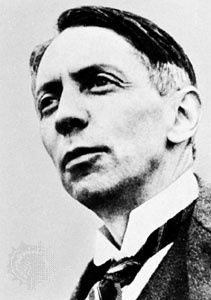 Danish playwrights of the post-World War I period, such as Sven Clausen and Svend Borberg, were influenced by German Expressionism, Symbolism, the Italian playwright Luigi Pirandello, and the psychoanalytic theories of Sigmund Freud. Kaj Munk (Munk, Kaj) revived the heroic drama of William Shakespeare and Friedrich von Schiller; En idealist (1928; Herod the King) and Ordet (1932; The Word) are his best plays. The work of Kjeld Abell (Abell, Kjeld) marked a split from naturalist drama, and a radical perspective underlay his witty dialogue. His most important plays were Melodien, der blev vaek (1935; The Melody That Got Lost), Anna Sophie Hedvig (1939), Dage på en sky (1947; Days on a Cloud), and Skriget (1961; “The Scream”). C.E. Soya was an important playwright of the period and a novelist and fine short-story writer; although uneven in quality, some of his daring experiments with the theatre were very successful.
Danish playwrights of the post-World War I period, such as Sven Clausen and Svend Borberg, were influenced by German Expressionism, Symbolism, the Italian playwright Luigi Pirandello, and the psychoanalytic theories of Sigmund Freud. Kaj Munk (Munk, Kaj) revived the heroic drama of William Shakespeare and Friedrich von Schiller; En idealist (1928; Herod the King) and Ordet (1932; The Word) are his best plays. The work of Kjeld Abell (Abell, Kjeld) marked a split from naturalist drama, and a radical perspective underlay his witty dialogue. His most important plays were Melodien, der blev vaek (1935; The Melody That Got Lost), Anna Sophie Hedvig (1939), Dage på en sky (1947; Days on a Cloud), and Skriget (1961; “The Scream”). C.E. Soya was an important playwright of the period and a novelist and fine short-story writer; although uneven in quality, some of his daring experiments with the theatre were very successful.Postwar literary trends
Many postwar poets found an aesthetic manifesto in Fragmenter af en dagbog (1948; “Fragments of a Diary”) by Paul la Cour, who was influenced by contemporary French poetry. Jens August Schade also had an important influence on postwar poets, as did the poets Gustaf Munch-Petersen and Morten Nielsen (Nielsen, Morten), both of whom had died in their 20s before the end of World War II. A revival of poetry followed Denmark's liberation (1945), and the existentialist periodical Heretica (1948–53) became the voice of a group of young writers who regarded a Christian philosopher, Vilhelm Grønbech, as their spiritual progenitor. Two outstanding poets apart from the Heretica group were Halfdan Rasmussen (Rasmussen, Halfdan), who also wrote excellent nonsense verse, and Erik Knudsen, also a brilliant satirical playwright. Both studied contemporary problems and reacted against the antirationalism and anti-intellectualism of the Heretica movement. Tove Ditlevsen was another important poet, as well as a novelist and short-story writer, unattached to any group; her often intensely personal work reflects the loneliness of life in the poorer quarters of Copenhagen.
Klaus Rifbjerg (Rifbjerg, Klaus), a distinguished short-story writer and poet, became the dominant novelist in Denmark after he published Den kroniske uskyld (“Chronic Innocence”) in 1958. He was a writer of great inventiveness and linguistic originality who made keen observations of contemporary society in his realistic novels. In a more satirical vein, Leif Panduro (Panduro, Leif) examined the place of the individual in society, paying special attention in his novels and television dramas to the problems of middle age and the emptiness of a welfare-state society. A more philosophical approach was taken by Villy Sørensen (Sørensen, Villy), whose Kafkaesque stories are in the sphere of absurdist literature. Both Sørensen and Rifbjerg belong to a modernistic tradition of cultural radicalism that found a forum in the journal Vindrosen (1959–63; “Wind Rose”), which they coedited. Peter Seeberg (Seeberg, Peter), another philosophical writer who debuted in the 1950s, was influenced by existentialism and by the philosopher Ludwig Wittgenstein. Seeberg's novels, plays, and short stories use experimental techniques to explore the nature of reality; some of his stories, for instance, take the form of such documents as necrologies or recipes, the narrative voice of these stories thus being removed altogether. The documentary novel, a popular genre in the 1960s in all the Nordic countries, had its principal exponent in Thorkild Hansen, whose trilogy on the Danish slave trade—Slavernes kyst (1967; Coast of Slaves), Slavernes skibe (1968; Ships of Slaves), and Slavernes øer (1970; Islands of Slaves)—was well received. In the 1980s, fictional biographies based on authentic documents gained popularity. Among Danish prose writers at the end of the 20th century, Peter Høeg won the greatest international following. His novel Frøken Smillas fornemmelse for sne (1992; Miss Smilla's Feeling for Snow, or Smilla's Sense of Snow), a thriller interlaced with social criticism and scientific tidbits, became an international best seller.
The modern poetry that became a hallmark of Danish literature after World War II gave rise to the mature works of Frank Jæger, a member of the Heretica circle; Thorkild Bjørnvig, who expressed a nihilistic outlook on life; and Ivan Malinovski, a visionary explorer of the relationship between humanity and nature and one of the early editors of Heretica. Further experimentation resulted in so-called system poetry, examples of which are Per Højholt's collections of poems Praksis (1977–89; “Praxis”) and Inger Christensen's Det (1968; “It”) and Alfabet (1981; “The Alphabet”). A melancholic sense of displacement pervades the poems of Henrik Nordbrandt, the leading Danish poet during and after the 1970s. He has been called the “eternal traveler” of Danish literature: the themes of constant mobility, departure, and arrival characterize his poems, which often show the influence of Asian writings.
The 1970s saw an upsurge of women authors, some consciously writing for the feminist cause and others content to portray life as experienced by women. Kirsten Thorup depicted, with irony and disillusionment, the alienated lives of the powerless in modern society; her work was rooted in modernism. The language of Dorrit Willumsen, another modernist focusing on the question of identity in a materialistic society, reflects the emptiness of the lives of her female characters. In the 1980s she turned to the semidocumentary historical novel with Marie: en roman om Madame Tussaud's liv (1983; Marie) and Bang: en roman om Herman Bang (1996: “Bang: A Novel About Herman Bang”) to probe the interplay between individuals—artists in particular—and societal demands. Dea Trier Mørch, a politically committed author and a member of the Røde Mor (“Red Mother”) artist collective, scored her greatest success with Vinterbørn (1976; Winter's Child), a sensitive novel about women from various social circumstances at a maternity hospital. It gave voice to Trier Mørch's belief in women's potential for solidarity and communality. Provocative and shunned by leftist radicals and doctrinaire feminists alike, Suzanne Brøgger was among the first to confront bourgeois concepts of sexuality and love with her Fri os fra kœrligheden (1973; Deliver Us from Love). With an emphasis on fluidity and change, she rejected all preset categorizations, writing with robust humour across genres and transgressing the boundary between personal experience and fabulation. Pia Tafdrup, who debuted in 1981 and became one of the foremost contemporary poets in Scandinavia, addresses existential questions through her highly visual and sensual poetry; her works use the female body as a metaphor for nature as well as an element of nature. Among other prominent women writers are Hanne Marie Svendsen, a storyteller known for her magical realism; Juliane Preisler, who explored the archetypical female universe in many genres; and the poet Kirsten Hammann.
Additional Reading
Surveys of Danish literature include P.M. Mitchell, A History of Danish Literature, 2nd augmented ed. (1971); Poul Borum, Danish Literature: A Short Critical Survey (1979); Sven H. Rossel (ed.), A History of Danish Literature (1992); and Marianne Stecher-Hansen (ed.), Twentieth-Century Danish Writers (1999). Critical studies of Danish literature include Bodil Wamberg (ed.), Out of Denmark: Isak Dinesen/Karen Blixen, 1885–1985 (1985), and Danish Women Writers Today (1985).Anthologies of Danish literature include Elias Bredsdorff (ed.), Contemporary Danish Plays (1955, reissued 1970), and Contemporary Danish Prose (1958, reprinted 1974); F.J. Billeskov Jansen and P.M. Mitchell (compilers), Anthology of Danish Literature (1972), in Danish and English; Line Jensen et al. (eds.), Contemporary Danish Poetry: An Anthology (1977); P.M. Mitchell and Kenneth H. Ober (trans. and eds.), The Royal Guest, and Other Classical Danish Narrative (1977); Annegret Heitmann (ed.), No Man's Land: An Anthology of Modern Danish Women's Literature (1987); and Hans Christian Andersen (compiler), New Danish Plays (1996). Ed.
- Baldwin, Henry
- Baldwin I
- Baldwin II
- Baldwin III
- Baldwin II Porphyrogenitus
- Baldwin IV
- Baldwin, James
- Baldwin, James Mark
- Baldwin, Matthias William
- Baldwin, Robert
- Baldwin, Roger Nash
- Baldwin Spencer
- Baldwin, Stanley, 1st Earl Baldwin Of Bewdley, Viscount Corvedale Of Corvedale
- Baldwin V
- Baldy Mountain
- Balearic Islands
- baleen whale
- Bale, John
- Balenciaga, Cristóbal
- baler
- Bales, Peter
- Balewa, Sir Abubakar Tafawa
- Balfe, Michael William
- Balfour, Arthur James Balfour, 1st earl of, Viscount Traprain
- Balfour Declaration